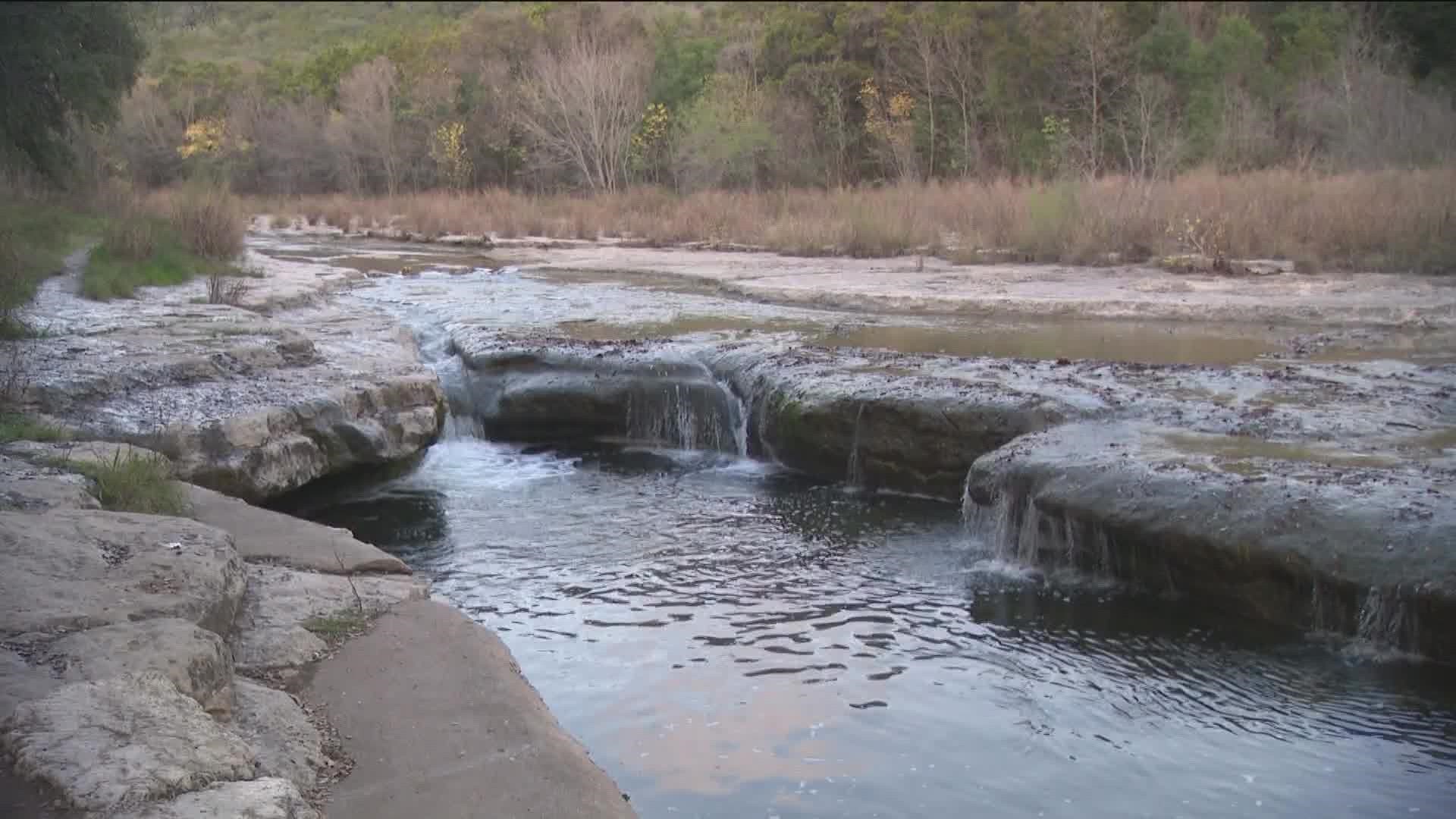AUSTIN, Texas — Austin city leaders claim they are trying to change what they call "climate injustice," in part by overhauling the Watershed Protection Department's strategic plan, which will guide its priorities and decision-making for the next decade.
Climate injustice is a topic Frances Acuna knows all too well.
She gave KVUE's Jenni Lee and photojournalist Dennis Thomas a tour of Williamson Creek in South Austin east of Interstate 35. Acuna said it and the surrounding area have been ravaged by flooding for years.
"...the trees are not holding on anymore," Acuna said.
Named after the creek, the Williamson Creek Greenbelt sits off William Cannon Drive, right by Acuna's Dove Springs neighborhood.
As the City of Austin works to reduce the flooding risk for hundreds of homes, an effort that included a buyout of more than 50 houses, Acuna is working to beautify the green space. She wants it to look like areas west of I-35.
"...on the other side of I-35, you see the greenbelt and it's beautiful. You see all these amenities. You see dog bags and all of that," Acuna said.
Areas like Bull Creek District Park off FM 360. Springs, trails and areas for native plants to thrive, or grow zones, help make this one of Austin's more popular parks.
Battle Bend Park is another renovated green space that sits off South Congress Avenue in South Austin, but west of I-35. It's complete with a basketball court, play area and grow zones. But east of I-35, Acuna said, "there's nothing."
Acuna is with Go! Austin/Vamos! Austin, or GAVA, a coalition of neighborhoods fighting for equitable policies and practices for their communities – communities like Dove Springs.
She said it is GAVA volunteers who clean up ignored areas, like the Williamson Creek Greenbelt, where Acuna said trash accumulates from a homeless camp. She said she's tried to get help from the City, but the lack of response only made her angry.
"Once, one of the council members told me, you know, 'Frances, you're not there at City hall, so you could be able to ask for things.' We have the West Side taking days off so they could ask for things, so we don't get anything because we don't ask," Acuna said.
Katie Coyne is trying to change that. Coyne is the environmental officer for the City of Austin.
"We don't have equitable environmental protection in the city," Coyne said.
She's also an assistant director for the Watershed Protection Department. She is in charge of Austin's environmental policies and said the city became environmentally inequitable decades ago.
"...in the 1990s, the desired development zone was established because of our Smart Growth Initiative, and that put more development pressure on Eastside communities," Coyne said.
Developments like the Plaza Saltillo District near East 5th Street in East Austin and, West of I-35, the Crestview Station near North Lamar Blvd in Central Austin.
Coyne also points to unequal conservation policies.
"We also know that environmental protections for the Westside are more stringent than anything we have on the East Side. And the reasons historically for that have been because we wanted to protect our drinking water on the Westside. We also wanted to protect endangered species like the Barton Springs salamander," Coyne said.
But with the Rain to River initiative, Coyne said the City is trying to remedy the ills of the past.
"There's a lot of different ways we need to do that," Coyne said.
First, Coyne said the City acknowledges that environmental advocacy groups aren't on an equal playing field.
"So we have Westside advocates who have been very successful in conserving conservation lands that help our ecosystems thrive on the Westside. And then we have Eastside environmental groups who don't have as much political capital, don't have as much funding, don't have as much time," Coyne said.
That's why she said the Rain to River plan prioritizes low-income and minority communities. It outlines several outreach strategies, including:
- Hiring ambassadors to gather stories from racially and economically diverse communities
- Awarding $5,000 grants to organizations that can help increase engagement
- Reaching out to community leaders and stakeholder groups to make new connections
"What work are we not doing that we should be doing? What work should we stop doing?" Coyne said.
The goal is for more areas to look like the J.J. Seabrook Greenbelt, tucked in between Martin Luther King Jr. Boulevard and Manor Road in East Austin.
With feedback and involvement from the community, the City finished most of the J.J. Seabrook Project in 2015. Replacing the culvert with a pedestrian bridge, halting mowing along streams to allow the growth of dense and diverse vegetation, and ultimately transforming unusable green space into an area where many can enjoy.
Frances Acuna is optimistic about the Rain to River plan.
"I see a community garden over there ... I see it beautiful," Acuna said.
She just hopes her goal to restore her neighborhood greenbelt won't take too long.
The Rain to River initiative is in the listening phase, with city leaders gathering community feedback. Phase One costs about $600,000, which comes out of Watershed Protection's main budget, which is funded by the drainage utility charge. Meanwhile, the implementation phase starts in two years, but Watershed Protection expects to release an update before then.
You can give feedback here.
Boomtown is KVUE's series covering the explosive growth in Central Texas. For more Boomtown stories, head to KVUE.com/Boomtown.

